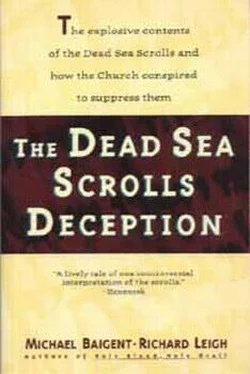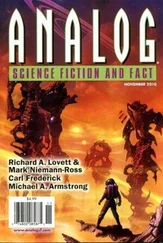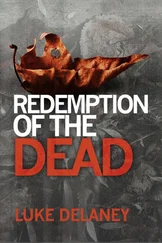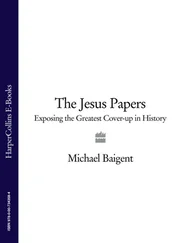Eisenman is emphatic about the conclusions to be drawn from de Vaux’s archaeology. If it proves anything, he states, it proves precisely the opposite of what de Vaux concludes — proves that the latest date for the scrolls having been deposited at Qumran is not ad 68 but ad 136. Any time up to that date would be perfectly consistent with the archaeological evidence. 20Nor, Eisenman adds, is the consensus correct in assuming that the destruction of the main buildings at Qumran necessarily meant the destruction of the site. 21There are, in fact, indications that at least some cursory or rudimentary rebuilding occurred, including a ‘crude canal’ to feed water into a cistern. Rather unconvincingly, de Vaux claimed this to have been the work of the Roman garrison supposed, on the basis of the coins, to have occupied the site. 22But Professor Driver pointed out that the sheer crudeness of the reconstruction does not suggest Roman work. 23De Vaux maintained that his theory, conforming as it did to the alleged destruction of Qumran in ad 68, was in accord with ‘ les données d’histoire’ the ‘accepted givens of history’ — ‘having forgotten’, as Professor Driver observed drily, ‘that the historical records say nothing of the destruction of Qumran in ad 68 by the Romans’. In short, Driver concluded, ‘the “ données d’histoire” are historical fiction’. 24
There is another crucial piece of archaeological evidence which runs diametrically counter to the interpretation of the consensus. De Vaux himself studiously, and justifiably, avoided referring to the ruins at Qumran as a ‘monastery’. As he explained, he ‘never used the word when writing about the excavations at Qumran, precisely because it represents an inference which archaeology, taken alone, could not warrant’. 25It is clear, however, that he nevertheless thought of Qumran as a species of monastery. This is reflected by his uninhibited use of such monastic terms as ‘scriptorium’ and ‘refectory’ to describe certain of the structures. And if de Vaux himself had some reservations about dubbing Qumran a ‘monastery’, other adherents of the consensus did not. In his book on the Dead Sea Scrolls, for example, Cardinal Danielou babbled happily about the ‘monks of Qumran’, even going so far as to state that ‘the monasticism of Qumran can be considered as the source of Christian monasticism’. 26
What de Vaux, his colleagues and adherents of the consensus chose consistently to overlook was the distinctly and unmistakably military character of some of the ruins. When one visits Qumran today, one will inevitably be struck initially by the remains of a substantial defensive tower, with walls of some feet in thickness and an entrance only on the second storey. Less obvious, but just across a small passageway from the tower, there is another structure whose function may not be immediately apparent. In fact, it is what remains of a well-built forge — complete with its own water supply for tempering the tools and weapons crafted within it. Not surprisingly, the forge is something of an embarrassment to the scholars of the international team, clinging to their image of placid, pacifist ‘Essenes’. Thus de Vaux scuttled away from the issue as fast as tongue and pen could carry him:
there was a workshop comprising a furnace above which was a plastered area with a drainage conduit. The installation implies that the kind of work carried on there required a large fire as well as an abundant supply of water. I do not venture to define its purpose any more precisely than that. 27
Which is rather like not venturing to define the purpose of empty cartridge cases and spent projectiles of lead scattered around the OK Corral in Tombstone, Arizona. Professor Cross, following in de Vaux’s footsteps but incapable of the same disingenuousness, grudgingly alludes to ‘what appears to have been a forge’. 28
In fact, arrows were found inside the ruins of Qumran; and while one could argue that these were loosed by attacking Romans, they are, as Professor Driver asserted, ‘as likely to have belonged to the occupants’ 29 — if not, indeed, more likely. On the whole, the military character of the ruins is so flagrant that another independent scholar, Professor Golb of the University of Chicago, has gone so far as to see in them an entirely martial installation. 30According to Golb, the scrolls were never composed or copied at Qumran at all, but were brought there, from Jerusalem, specifically for protection. ‘No fragment of parchment or papyrus’, Golb has pointed out, ‘was ever found in the debris… nor any tools of scribes… ‘ 31
Apart from coins and the physical ruins, the most important body of external evidence used by the international team for dating the Dead Sea Scrolls derived from the tenuous science of palaeography. Palaeography is the comparative study of ancient calligraphy. Assuming a strictly chronological and linear progression in the evolution of handwriting, it endeavours to chart developments in the specific shape and form of letters, and thus to assign dates to an entire manuscript. One might find, for example, an old charter or some other document in one’s attic. On the basis not of its content, but of its script alone, one might guess it to date from the 17th as opposed to the 18th century. To that extent, one would be practising a species of amateur palaeography. The procedure, needless to say, even when employed with the most scientific rigour, is far from conclusive. When applied to the texts found at Qumran, it becomes feeble indeed — and sometimes tips over into the ludicrous. Nevertheless, de Vaux invoked palaeography as another corpus of external evidence to discredit the conclusions, based on internal evidence, of Roth and Driver. It was, therefore, the alleged palaeographical evidence pertaining to Qumran that Eisenman had next to demolish.
Palaeography, according to Frank Cross of the international team, ‘is perhaps the most precise and objective means of determining the age of a manuscript’. He goes on to explain:
we must approach the problems relating to the historical interpretation of our texts by first determining the time period set by archaeological data, by paleographical evidence, and by other more objective methods before applying the more subjective techniques of internal criticism. 32
Why internal evidence should necessarily be more ‘subjective’ than that of archaeology and palaeography Cross does not bother to clarify. In fact, this statement inadvertently reveals why palaeography should be deemed so important by adherents of the consensus: it can be used to counter the internal evidence of the documents — evidence which makes sense only in the context of the 1st century AD.
The most prominent palaeographical work on the Dead Sea Scrolls was done by Professor Solomon Birnbaum of the University of London’s School of Oriental Studies. Birnbaum’s endeavours received fulsome endorsement from Professor Cross, who hailed them as ‘a monumental attempt to deal with all periods of Hebrew writing’. 33Attempting to parry the copious criticism to which Birnbaum’s exegesis was subjected, Cross asked his readers to remember ‘that it was written by a professional paleographer tried to the limit by the Lilliputian attacks of non-specialists’. 34Such is the intensity of academic vituperation generated by the question of palaeographical evidence.
Birnbaum’s method is bizarre to say the least, reminiscent less of the modern scientific method with which he purports to dignify it than of, say, the nether reaches of numerology. Thus, for example, he presupposes — and the whole of his subsequent procedure rests on nothing more than this unconfirmed presupposition — that the entire spectrum of the texts found at Qumran extends precisely from 300 bc to ad 68. Thus, in one instance, he takes a text of Samuel found in Cave 4 at Qumran. Having methodically combed this text, he cites forty-five specimens of a particular calligraphic feature, eleven specimens of another. ‘ Mit der Dummheit’, Schiller observed, ‘ kämpfen Götter selbst vergeben.’ For reasons the gods themselves must find mind-boggling, Birnbaum then proceeds to set up an equation: the proportion of 56 to 11 equals 368 to x (368 being the number of years the texts span, and x being the date he hopes to assign to the text in question). The value of x — calculated, legitimately enough, in purely mathematical terms — is 72, which should then be subtracted from 300 bc, Birnbaum’s hypothetical starting point. He arrives at 228 BC; ‘the result’, he claims triumphantly, ‘will be something like the absolute date’ for the Samuel manuscript. 35To speak of ‘something like’ an ‘absolute date’ is rather like speaking of ‘a relatively absolute date’. But quite apart from such stylistic solecisms, Birnbaum’s method, as Eisenman says, ‘is, of course, preposterous’. 36Nevertheless, Birnbaum employed his technique, such as it was, to establish ‘absolute dates’ for all the texts discovered at Qumran. The most alarming fact of all is that adherents of the consensus still accept these ‘absolute dates’ as unimpugnable.
Читать дальше












